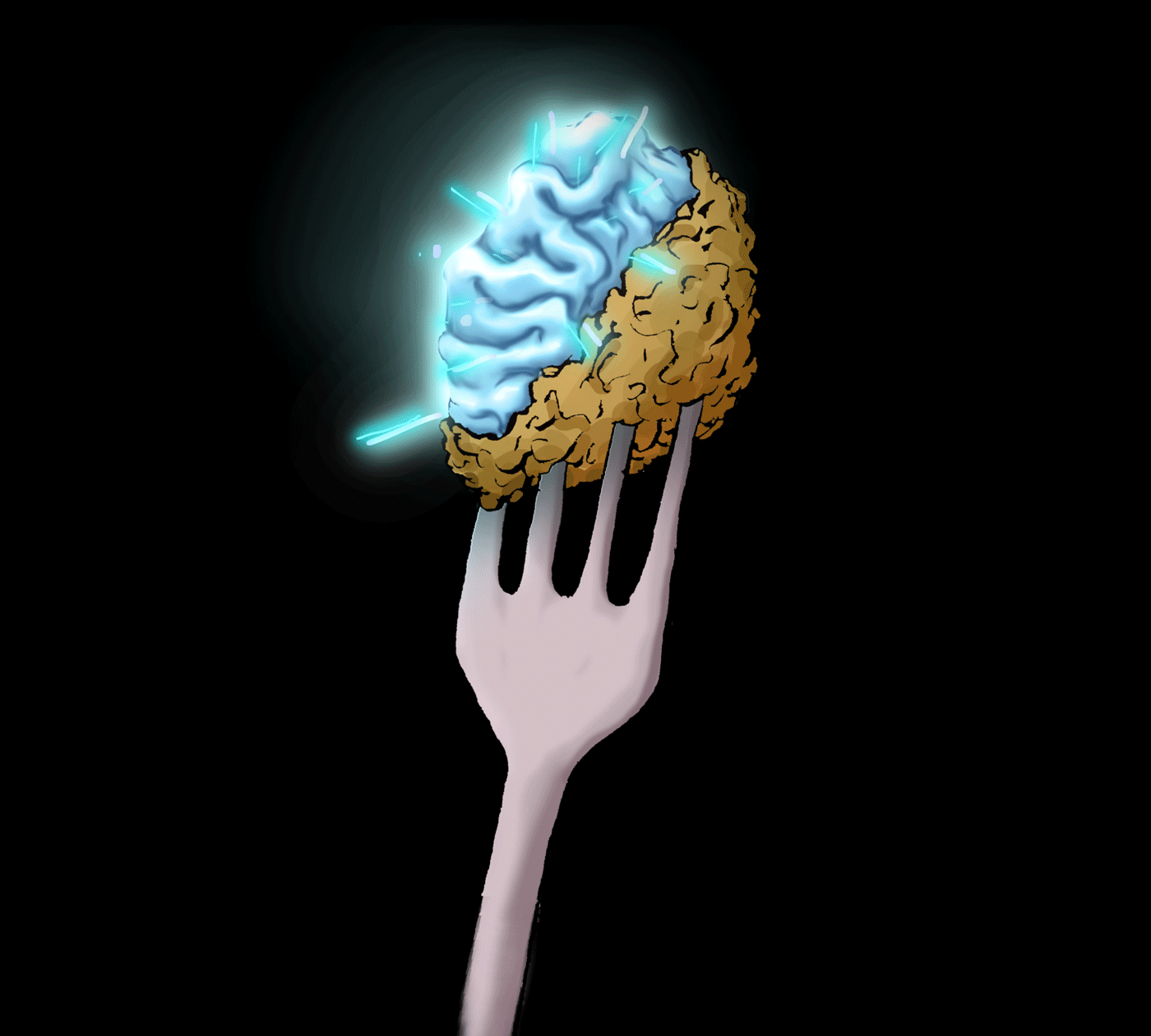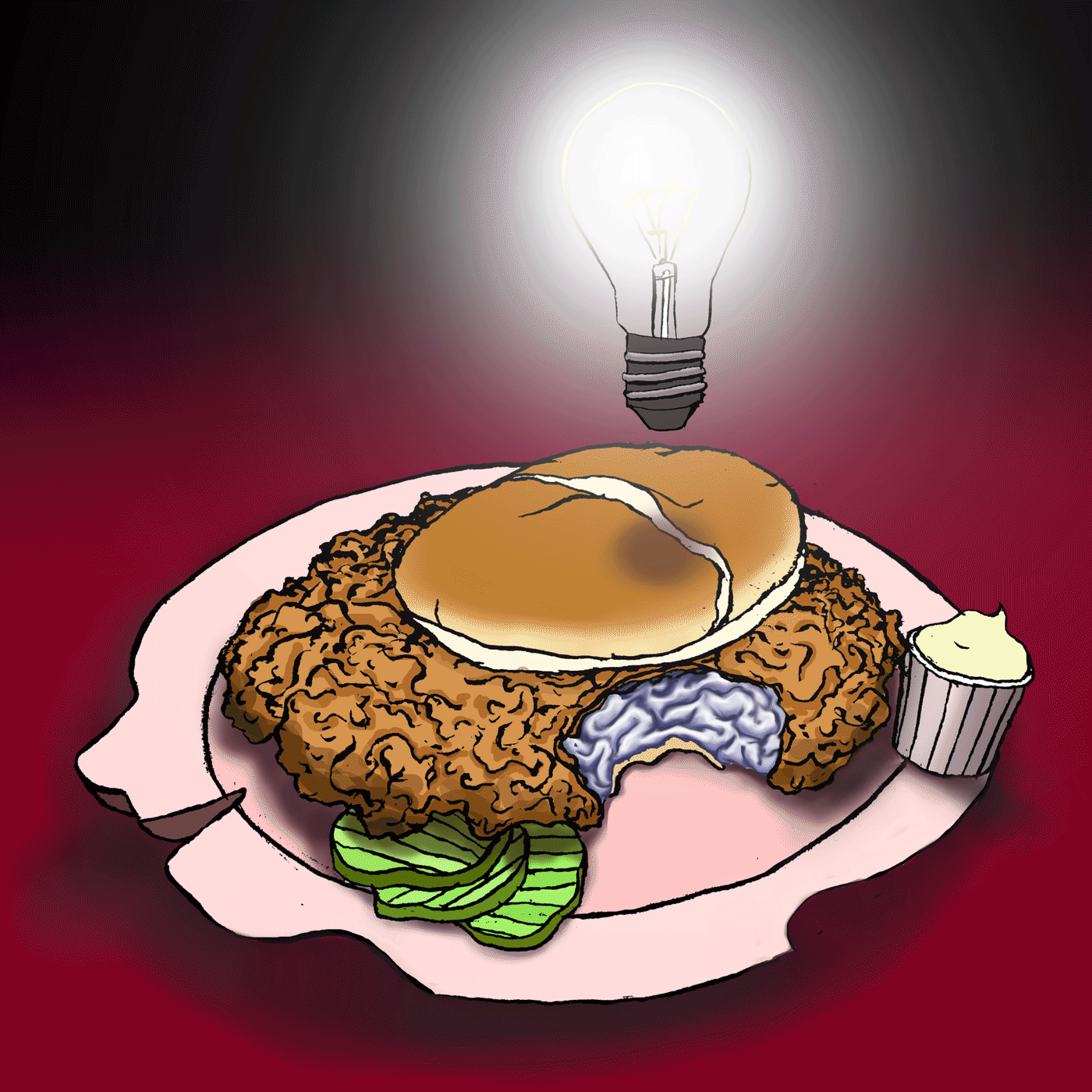
We used to relish the mild organ for its mild flavor and affordability, but now brains are hard to find outside of lavish restaurants. What happened?
In one famous scene in Indiana Jones and the Temple of Doom, a rajah’s feast, featuring giant beetles and live baby boas, concludes with a grand finale of chilled monkey brains en crâne. The very sight of the brains, gelatinous and ruby red, causes the film’s leading lady to faint. Though director Steven Spielberg probably didn’t realize it, in 1935 (the year in which the film is set), brains were a fairly common item on the American dinner table. Today they’re still eaten throughout the world, from Indonesia to Pakistan, but they’re nearly impossible to find in the U.S. So why don’t Americans love brains like we used to?
Humans have been eating brains for about as long as we’ve been cooking anything. The earliest cookbook (4th or 5th century AD), the Roman Apicius, included brains as the stuffing for sausages, and in the occasional brain-enriched eggy pudding flavored with roses, wine, or fruit.
But in defense of the fainting lady from Indiana Jones, Americans throughout history have primarily eaten brains fried or disguised—and utilized as a cheap source of protein more than enjoyed as a delicacy. Crispy brain cakes were idealized as both economical and esculent, appearing as “a good way to deal with cooked brains left from the previous day” in books like Phyllis Browne’s The Dictionary of Dainty Breakfasts (1899) and, a year later, between the curry balls and jugged rabbit of Dainty Dishes for Slender Incomes’ “Plain Cooking” chapter. Fried brain sandwiches are still popular today among the descendants of the German working class in the Ohio River Valley.
In a few other corners of the country, brains are still part of the diet. Scrambled eggs ‘n brains is still very much a thing in the South, where Rose brand canned pork brains in milk gravy are available at Walmart and doomsday-prepper websites. And Californians and Texans are still keeping the love of brains alive with tacos de sesos.

Although they’re not as common as they once were, brains do appear on some of the better-regarded menus in America today, politely disguised as condiments. At Takashi in New York’s West Village, diners squeeze whipped calf’s brains from a toothpaste tube onto caviar-gilded blini. And Top Chef contestant and offal enthusiast Chris Cosentino dips a furtive toe into gray matter on the menus of Cockscomb in San Francisco and Jackrabbit in Portland, Oregon, both of which offer porky “brainaise” for dipping crispy pig’s ear and chicharrón.
As with most offal, the brains of calves are typically most recommended for their youthful texture, but pork, goat, and sheep are also eaten. “There is scarcely any difference in the flavor,” wrote Charles Fellows in The Culinary Handbook (1904). To many authors, though, there is scarcely any flavor at all. Waverley Root called brains “incisive in nature but neutral in taste,” and Irma Rombauer wrote enigmatically in the second edition of The Joy of Cooking that “their flavor is—to use an overworked word—intriguing.” That said, Rombauer also lamented that “calf brains are generally in bad repute,” insisting that simple preparations go far in improving their palatability, that brains “only need a little pep in flavor—sherry, Worcestershire sauce, etc.—to make them very good.”
Though their association with wartime rationing dimmed their spotlight somewhat, brains still had their ardent champions into the 1930s and ’40s. “We do not make anything like enough use of brains,” argued Thomas Welby in Away, Dull Cookery! (1932). “The value of this delicate, very easily digested and wonderfully restorative article of diet … can hardly be exaggerated.”
In the last half a century or so, brains have had bigger problems than their mild flavor. The first nail in the coffin: the link between cholesterol and arteriosclerosis, discovered in the 1950s. (This coincided with the second nail: the development of safer commercial fryers, clinching America’s preference for crispiness, which brains inherently lack.) While 12 slices of bacon with two fried eggs contains 241 percent of the U.S. recommended daily allowance for cholesterol, one three-ounce serving of pork brains in milk gravy contains an astonishing 1170 percent. And no one could deny that the two best ways to eat brains were either fried or with eggs: two surefire ways to a heart attack.
People started wising up to the fact that brains aren’t the healthiest choice, but the final nail came in the 1990s, when epidemiologists discovered that the fatal variant Creutzfeldt–Jakob disease (vCJD) is linked to eating beef contaminated with mad cow disease. The USDA prohibits selling the brains of cows older than 30 months, and vCJD is exceedingly rare, but brains haven’t really come back into fashion.
Although tastes certainly do change, sometimes bad PR is a bigger influence than we think. The Joy of Cooking, once a booster of the unsung brains, decreased its six recipes in 1943 to four in 1975. The 1997 edition dutifully included one lonely recipe for brains in brown butter sauce, but by 2006 the book advised avoiding brains altogether. If the upcoming edition includes any mention of brains at all, says author John Becker (Irma Rombauer’s great-grandson), it will be solely for comprehensiveness.
In a recent interview with Bloomberg, Cosentino said that eating brains is such a common chef move now that “it’s stopped being so cool,” which leads one to the conclusion that perhaps Cosentino does it less out of evangelism and more out of provocation. If they’ve really achieved the level of trendiness that Cosentino claims, then why isn’t there some middle ground between canned pork brains ‘n gravy and a $35 tube of creamed calf’s brains? Between the bland flavor, lack of texture, lack of availability, and associated health risks, for most Americans, eating brains just isn’t worth a second thought.